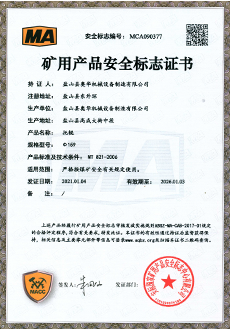 Afrikaans
Afrikaans  Albanian
Albanian  Amharic
Amharic  Arabic
Arabic  Armenian
Armenian  Azerbaijani
Azerbaijani  Basque
Basque  Belarusian
Belarusian  Bengali
Bengali  Bosnian
Bosnian  Bulgarian
Bulgarian  Catalan
Catalan  Cebuano
Cebuano  Corsican
Corsican  Croatian
Croatian  Czech
Czech  Danish
Danish  Dutch
Dutch  English
English  Esperanto
Esperanto  Estonian
Estonian  Finnish
Finnish  French
French  Frisian
Frisian  Galician
Galician  Georgian
Georgian  German
German  Greek
Greek  Gujarati
Gujarati  Haitian Creole
Haitian Creole  hausa
hausa  hawaiian
hawaiian  Hebrew
Hebrew  Hindi
Hindi  Miao
Miao  Hungarian
Hungarian  Icelandic
Icelandic  igbo
igbo  Indonesian
Indonesian  irish
irish  Italian
Italian  Japanese
Japanese  Javanese
Javanese  Kannada
Kannada  kazakh
kazakh  Khmer
Khmer  Rwandese
Rwandese  Korean
Korean  Kurdish
Kurdish  Kyrgyz
Kyrgyz  Lao
Lao  Latin
Latin  Latvian
Latvian  Lithuanian
Lithuanian  Luxembourgish
Luxembourgish  Macedonian
Macedonian  Malgashi
Malgashi  Malay
Malay  Malayalam
Malayalam  Maltese
Maltese  Maori
Maori  Marathi
Marathi  Mongolian
Mongolian  Myanmar
Myanmar  Nepali
Nepali  Norwegian
Norwegian  Norwegian
Norwegian  Occitan
Occitan  Pashto
Pashto  Persian
Persian  Polish
Polish  Portuguese
Portuguese  Punjabi
Punjabi  Romanian
Romanian  Russian
Russian  Samoan
Samoan  Scottish Gaelic
Scottish Gaelic  Serbian
Serbian  Sesotho
Sesotho  Shona
Shona  Sindhi
Sindhi  Sinhala
Sinhala  Slovak
Slovak  Slovenian
Slovenian  Somali
Somali  Spanish
Spanish  Sundanese
Sundanese  Swahili
Swahili  Swedish
Swedish  Tagalog
Tagalog  Tajik
Tajik  Tamil
Tamil  Tatar
Tatar  Telugu
Telugu  Thai
Thai  Turkish
Turkish  Turkmen
Turkmen  Ukrainian
Ukrainian  Urdu
Urdu  Uighur
Uighur  Uzbek
Uzbek  Vietnamese
Vietnamese  Welsh
Welsh  Bantu
Bantu  Yiddish
Yiddish  Yoruba
Yoruba  Zulu
Zulu Essential Parts and Features of Roller Conveyor Systems for Efficient Material Handling
Understanding Roller Conveyor Components Essential Elements for Efficient Material Handling
Roller conveyors are integral to many industrial and manufacturing processes. They allow for the easy and efficient movement of goods across various points within a facility. A roller conveyor system is composed of several key components, each playing a crucial role in ensuring the conveyor operates smoothly and effectively. In this article, we will explore the essential components of roller conveyors, their functions, and their importance in material handling applications.
1. Rollers
The most prominent component of a roller conveyor is, of course, the rollers themselves. These cylindrical elements facilitate the movement of items along the conveyor system. Rollers come in various sizes, materials, and designs, allowing them to accommodate different types of products and weights. Common materials for rollers include steel, aluminum, and plastic, each chosen based on the specific requirements of the application. The selection of roller type is critical, as it affects the conveyor’s durability, efficiency, and the overall cost of ownership.
2. Frame
The frame forms the backbone of the roller conveyor system. It provides structural support and stability to the entire setup. Frames can be made from various materials, including steel and aluminum, with the choice typically dependent on factors such as load capacity, environmental conditions, and budget constraints. Additionally, frames are designed to ease the installation process and allow for modifications in the future, making them versatile in application.
3. Drive Mechanisms
Many roller conveyor systems include a drive mechanism, which is essential for powering the rollers. This can be accomplished through several methods, including electric motors, belts, or chain drives. The drive mechanism is vital for moving products along the conveyor, and its design can vary based on the system's specific needs, such as the required speed and load capacity. Proper selection and maintenance of the drive mechanism are crucial for ensuring smooth operation and minimizing downtime.
roller conveyor components

4. Support Structures
Support structures are necessary to maintain the proper height and alignment of the conveyor system. These include legs, brackets, and supports that can be adjusted to accommodate the specific layout of a facility. A well-designed support structure not only enhances the stability of the conveyor but also allows for easy access during maintenance and adjustments.
5. Static and Dynamic Components
While the rollers are primarily dynamic, there are also static components within roller conveyor systems, such as end stops, guides, and side rails. End stops prevent items from rolling off the conveyor, while guides and side rails help to keep products aligned and secure during transport. These components contribute to the overall safety and efficiency of the system, reducing the risk of accidents and product damage.
6. Control Systems
For advanced roller conveyor systems, control systems may be integrated to automate various functions. These systems can manage the speed of the conveyor, determine when and how to divert products, and optimize the flow of materials throughout production processes. Implementation of control systems not only enhances efficiency but also allows for real-time monitoring and troubleshooting.
Conclusion
Roller conveyors are critical in facilitating the transportation of goods in a range of industries, from manufacturing to logistics. Understanding the various components of roller conveyors—such as rollers, frames, drive mechanisms, support structures, and control systems—can significantly impact the design and functionality of material handling systems. Choosing the right components tailored to specific operational needs can lead to improved efficiency, reduced operational costs, and ultimately, a more productive workflow. As technology advances, the design and manufacturing of roller conveyor components continue to evolve, offering even greater flexibility and capability for businesses looking to optimize their material handling processes.
-
Revolutionizing Conveyor Reliability with Advanced Rubber Lagging PulleysNewsJul.22,2025
-
Powering Precision and Durability with Expert Manufacturers of Conveyor ComponentsNewsJul.22,2025
-
Optimizing Conveyor Systems with Advanced Conveyor AccessoriesNewsJul.22,2025
-
Maximize Conveyor Efficiency with Quality Conveyor Idler PulleysNewsJul.22,2025
-
Future-Proof Your Conveyor System with High-Performance Polyurethane RollerNewsJul.22,2025
-
Driving Efficiency Forward with Quality Idlers and RollersNewsJul.22,2025





























